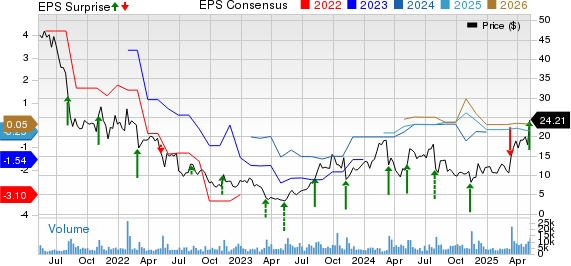Nvidia’s AI Growth: Key Insights from the Annual GTC Conference
Nvidia (NASDAQ: NVDA) has established itself as a leader in artificial intelligence (AI) technology, drawing significant attention from analysts, industry insiders, and investors. The company’s annual GTC conference has also become a key event to watch as Nvidia shares updates on product developments and industry advancements.
At this year’s conference, CEO Jensen Huang delivered a keynote address containing important information for investors. His insights included updates on Nvidia’s production plans and future initiatives.
New Developments in Product Roadmap
Huang announced that the Blackwell platform is now fully operational and revealed the roadmap beyond Blackwell, with a new platform, Rubin, expected next year, and Feynman planned for 2028. In addition, he mentioned a partnership with General Motors to develop self-driving vehicles, highlighting Nvidia’s vision for a significant role in robotics and autonomous driving.
Forecasting $1 Trillion in AI Spending
Despite current market pressures that have driven Nvidia’s stock down to a discount compared to its all-time high, Huang provided a positive forecast. He presented a projection of growing data center capital expenditures, which are expected to rise from approximately $250 billion in 2023 to $500 billion in 2024, ultimately reaching $1 trillion by 2028.
“I expect data center buildout to reach $1 trillion, and I’m fairly certain that we will reach that milestone soon,” Huang stated. He attributed this growth to a focus on accelerated computing and the increasing need for software investment in technologies such as machine learning and large language models, which enhance AI capabilities. Nvidia’s revenue is primarily generated from data centers, where it holds a dominant position, particularly with its GPUs, which are essential for AI applications like chatbots.
Nvidia’s revenues largely depend on capital expenditure in data centers. Concerns have been raised about cyclical nature of capex spending, which can suffer during recessions. Nevertheless, with data centers contributing 91% of Nvidia’s revenue in the fourth quarter, growth in this sector appears promising. If capital expenditures double between 2025 and 2028, Nvidia’s data center revenues could follow suit—or grow even faster with new offerings like Rubin and Feynman.
Is Nvidia Stock a Good Investment?
Following its fourth-quarter earnings report, where Nvidia reported a remarkable 78% revenue growth, the stock experienced a sell-off. This decline comes amid rising concerns about the macroeconomic landscape surrounding the company. Despite this, Huang’s expectations suggest significant growth potential for Nvidia, particularly as projected data center growth figures do not factor in potential revenue from edge applications, including robotics and autonomous vehicles.
Currently, Nvidia shares trade at a price-to-earnings ratio of 39, with a forward P/E ratio below 26. Analysts anticipate a robust earnings per share growth of 50% for the year. Given this valuation, Nvidia stock aligns with the performance of the S&P 500, making it appear undervalued considering its positive growth trajectory in AI and anticipated data center investment.
The recent pessimism surrounding Nvidia might be overstated. Even if capital expenditures take longer to reach the $1 trillion milestone, Nvidia does not need to achieve that benchmark for the stock to perform well. As long as Nvidia can maintain growth rates that surpass the S&P 500 in the coming years, it remains well-positioned for continued success in a rapidly evolving technological landscape.
Despite a pause in investor enthusiasm during Huang’s keynote, driven by external factors such as trade concerns and consumer spending, the long-term outlook for Nvidia appears solid. With expected growth in data center spending, investors can remain optimistic about Nvidia’s future performance in the market.
Should You Invest $1,000 in Nvidia Now?
Before purchasing Nvidia stock, it’s important to consider the following:
The Motley Fool Stock Advisor team has recently listed what they believe to be the 10 best stocks to buy, with Nvidia not making the cut. The identified stocks have potential for significant returns in coming years, which might be worth exploring.
Consider this: if you had invested $1,000 in Nvidia back on April 15, 2005, it would have grown to $707,481!*
Stock Advisor provides investors with practical advice, portfolio strategies, and insights with new stock picks every month. The service has outperformed the S&P 500 four times over since 2002! Don’t miss the latest list of top 10 stocks available to members.
*Stock Advisor returns as of March 18, 2025
Jeremy Bowman has positions in Nvidia. The Motley Fool has positions in and recommends Nvidia. The Motley Fool also recommends General Motors. The Motley Fool maintains a comprehensive disclosure policy.
The views and opinions expressed herein are those of the author and do not necessarily reflect those of Nasdaq, Inc.




